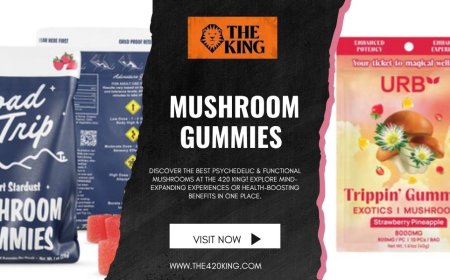Supporting Australian Schools with Student Mental Health Programs
Explore practical strategies and partnerships empowering Australian schools to support student mental health—from social-emotional learning and mindfulness to on-site counseling and crisis response.

Every Australian school is more than a place to learnits a community where children grow, connect, and discover their potential. Yet for many young students, the daily pressures of friendships, exams, and life at home can feel overwhelming. Recognizing and nurturing mental wellbeing alongside academic achievement is no longer optional; its essential.
By weaving mental health programs into the fabric of school life, educators, parents, and specialists work together to create supportive environments where every child can flourish. In the sections that follow, well explore practical strategies, real-world partnerships, and the innovative approaches that are helping Australian schools champion student wellbeing.
Understanding the Challenge
Prevalence Among Younger Students
Nearly 14% of Australian children aged 411 experience a mental disorder, with anxiety and ADHD among the most common conditions. These difficulties often lead to missed school days and reduced engagement in the classroom.
Impact on Adolescents
Around 14% of young people aged 417 have a diagnosable mental disorder each year. Depression and self-harm become more prevalent during the teenage years, with most serious issues emerging before age 25.
The Role of Schools in Mental Health
Universal Strategies
Social?Emotional Learning
Embedding social?emotional learning (SEL) across all year levels helps students develop resilience, empathy, and self?regulation. Programs like MindMatters and KidsMatter have been shown to improve wellbeing and reduce bullying.
Mindfulness and Wellbeing Breaks
Short, daily mindfulness exercises can enhance focus and calm. Schools that introduce brief breathing or visualization sessions often report fewer behavioural disruptions and higher engagement.
Targeted Support
Early Identification
Regular wellbeing surveys and check?ins help teachers spot warning signslike mood changes or slipping gradesbefore problems escalate. Early intervention at this stage often prevents the need for intensive services later.
Small?Group Programs
Groups of five to eight students meet with trained facilitators to discuss coping strategies, problem?solving, and peer support. These targeted sessions can reduce the number of referrals for one?on?one counseling.
Specialist Care and External Partnerships
On?Site Counseling
Partnering with local clinics offers students access to psychologists without leaving school grounds. For professional assessment or therapy, consider connecting with a dedicated Child Psychologist in Australia to complement in?school supports.
Crisis Response Teams
Clear protocols ensure swift action when students express suicidal thoughts or self?harm intent. Regular drills and staff training embed these procedures, making emergency responses both efficient and compassionate.
Funding and Resources
Government Initiatives
Medicare-subsidised mental health services continue to reach more Australians each year, with significant uptake among young people. These subsidies make professional support more accessible to families in need.
Community and Private Partnerships
Local businesses, community groups, and philanthropic organizations can sponsor wellbeing rooms, training days, or resource libraries. Schools forging these partnerships often secure multi?year funding, ensuring program continuity.
Building Capacity and Training
Teacher Training
Teachers are often the first to notice student distress. Professional development in mental health literacy equips them to recognise red flags, provide initial support, and refer students appropriately.
Peer Programs
Peer support networkswhere trained students offer empathy and guidancecreate a supportive school culture. Initiatives like Student Wellbeing Ambassadors foster leadership skills and help reduce stigma around mental health conversations.
Innovation and the Future
Digital Solutions
Telehealth removes geographic barriers for rural and remote students, offering timely counseling via video calls. Mental health apps provide self?guided mindfulness, journaling, and mood?tracking tools, complementing face?to?face supports.
Policy and Research
Advocates are pushing for national mandates to guarantee every school a baseline of mental health services backed by dedicated funding. Ongoing research into program effectivenesstracking attendance, wellbeing metrics, and academic outcomeswill ensure continuous improvement.
Conclusion
Supporting student mental health in Australian schools requires a multifaceted approach: universal wellbeing education, targeted supports, specialist care partnerships, robust funding, and ongoing training. By embedding mental health programs into everyday school life, we foster resilience, enhance learning, and ensure every child has the opportunity to thrive.



































